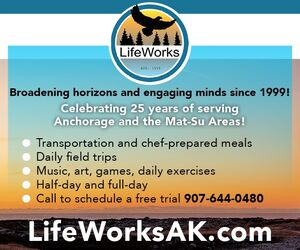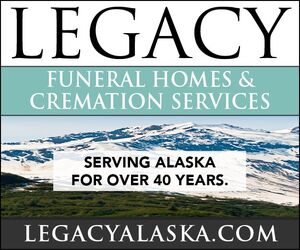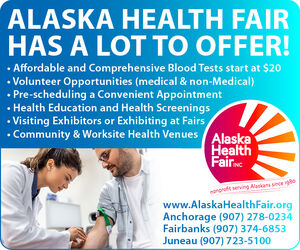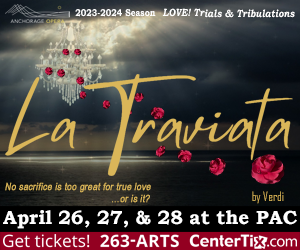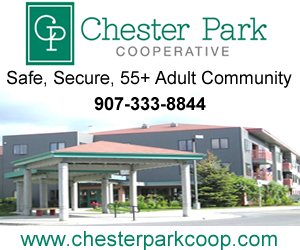Conference connects Elders and youth
Personal contributions to Alaska Native culture will be emphasized
October 1, 2018

Sven Haakanson, Jr. photo
Ida Nelson of Lepquinm Gumilgit Gagoadim Tsimshian Dancers sings the "Four Clan Canoe" song next to four year old Jeffrey Mark last year during the annual Chin'an: A Night of Cultural Celebration event. This celebration is open to the public during the Elders & Youth Conference.
One of the best things about Alaska is its ease with intergenerational relations. It's not unusual to see a 90-year-old walking along a beach with their 10-year-old friend, or generations still living under the same roof.
And it is especially important here where Alaska Native languages and cultures can sometimes be undercut by modern life.
First Alaskans Institute will address this at its annual Elders and Youth Conference, October 14 through 17 in Anchorage.
This year's theme, Na Ganiyaatgm, Na Lagm (Our Ancestors, Our Fire), speaks to the flame inside Alaska Natives that keep them connected to their ancestors, homelands and what it is that makes them unique in Alaska.
This year's theme language is Sm'algyax, which Tsimshians speak in northwestern British Columbia and Southeastern Alaska, and literally means "real or true language." Every year a different Alaska Native language will be featured, organizers said.
The first event at the conference is Warming of the Hands, which gathers everyone together.
"At the Warming of the Hands we begin by First Alaskans Institute welcoming everyone to the conference, inviting our ancestors into the room with us and setting the tone for our gathering," said Indigenous Leadership Continuum Director for First Alaskans Institute Gatgyedm Hana'ax Karla Booth (Ts'msyen). "We'll share the theme and allow time for personal introductions," she said. "Once people are settled in, we'll allow for people to split into the Men's and Women's Houses to discuss topics and issues that are from their heart."
Warming of the Hands has become very popular, Booth said.
"Since 2011 we have offered this and conference attendees continuously request more time for it because they value it so much. The day will end with regional breakout sessions, allowing for community members to talk about what's most important in their respective areas pertaining to all topics."
Regions include Copper River Basin, The Aleutian Chain & Pribilofs, North Slope, Norton Sound, Bristol Bay, Yukon Kuskokwim Delta, Prince William Sound, Southcentral, Interior, Kodiak Island, Northwest Arctic, and Southeast.
Attendees carry lessons throughout life
No matter how long ago they attended a conference, two Inupiaq women from Utqiagvik (formerly Barrow) feel the experience helped them see how traditions could carry them through their lives with a solid identity.
Youth participants, 13 to 18 years old, come to the conference from far-flung villages and for many it's the first time at a statewide event. It's a memorable experience.
"For me it was learning where we came from and how together we can unite our traditions with today's (back then) society," said Kuutuuq L. Olemaun, daughter of the late mayor of Utqiagvik Nate Olemaun, and who has followed his commitment to the community as a councilwoman. "That we shared the same obstacles with losing language, culture all throughout the state. Seeing how we can revive our traditions/culture while moving forward with society."
For Nutaaq Simmonds, who went back to school at the University of Alaska Fairbanks at the age of 68, it influenced her activism and determination to protect indigenous rights. She went to the Dakota Access Pipeline Protest in 2016.
"I don't remember when my first Elders and Youth Conference was," she said. "It may have been 2003 when I worked at IHC (Iñupiat Heritage Center). How old was I then? A granmother already!"
For Simmonds, the meeting offered a glimpse into the past.
"I was impressed with the generations coming together, like long ago, when there was no language separation. I think hearing the reason the Elders didn't pass on the language, shamed out of it, etc., gave the youth the desire to learn to speak the mother tongue, because understanding always paves the way to better relations."
From all across the state
More than 2,000 participants from rural and urban Alaska will gather for the conference's 35th year, which is held during Alaska Federation of Natives convention week. They will be exposed to new experiences and take away some life-changing experiences.
"There were two memorable moments," Simmonds said. "One, when I saw a young person speak his mother tongue that he learned. We were all proud of him. Second, was when I heard Fred John, an Elder, talk about his long-distance walk to raise awareness for Native food security."
Ultimately, the conference's goal is to nurture future Alaska Native leaders who have a strong sense of history, culture and who can answer the question, "What will we add to this fire to keep it burning brightly?"
"Working together and gathering resources and sharing what works and what doesn't work," said Olemaun. "Always fighting and standing tall for our people."
First Alaskans Institute Elders and Youth Conference
"Na Ganiyaatgm, Na Lagm" ("Our Ancestors, Our Fire"), Oct. 14 – 17, 2018, at the Dena'ina Center, 600 W. Seventh Avenue, Anchorage
Registration is now open online, an early bird discount is available through Friday, Oct. 5, with full price registration through the days of the conference. Tickets to events are either free or $45 to $55 for the convention workshops. Elders are always free.
For more information, visit https://firstalaskans.org/
Sunday, Oct. 14 1 to 5 p.m., Warming of the Hands. It will feature Men's and Women's Houses. 5:30 to 7:30 p.m., Warming of the Hands Reception
Monday, October 15 8 a.m. to 5 p.m., Conference; 6:30 to 9:30 p.m., Chin'an Night (Dena'ina for "thanks"), talent from across Alaska
Tuesday, October 16 9 a.m. to 5 p.m., conference; 7 to 9 p.m., Youth Dance
Wednesday, October 17 9 a.m. to noon, Conference Workshop sessions
The following workshops are scheduled, but the times were not set at Senior Voice press time.
"Make Smart Financial Decisions No Matter Your Age," presented by the National Council on Aging. This presentation will remind attendees of the need for balance and purpose in financial areas of their life using a variety of teaching methods such as: interactive bingo game, booklets, a short video and elders and youth talking together. We hope to get participants motivated to explore ways that they can improve their relationship to money, no matter their age. And outcome should be a sense of confidence that they can find good financial solutions for their lives.
"Our Culture is Our Prevention: Qungasvik (Tools for Life)," presented by the Qungasvik Projects and University of Alaska Fairbanks
This workshop will present videos, stories and teachings from the youth, Elders and community leaders engaged in the Qungasvik (Tools for Life) Projects. The Qungasvik Projects is a community-developed and culturally-rooted approach that builds strengths and protection against suicide and alcohol misuse in young people. This workshop will bring together community leaders of the Qungasvik program to share stories of strength, hope and healing from the work. At the center of the Qungasvik Projects is the Qasgiq (Men's House or Community Center) Model. The workshop will create a qasgiq for Elders, youth and participants to learn, share and grow with one another. This will "open a window to the ancestors" and center culture and Indigenous knowledge as prevention for our highest health priorities.
"Putting Values into Action: Voting & Civic Engagement," presented by The Alaska Center. The purpose of this presentation is to spark dialogue about how we can act on our values through voting and civic engagement and provide basic information about how, where and when to vote. Elders and youth will be invited to engage in discussion about the history of Alaska Native suffrage and civic engagement and what traditional values we would like to see reflected in policies and representatives in government today. Participants will walk away with a strong understanding of how to vote in the upcoming election and be encouraged to stay involved in civic engagement throughout their lives.

Sven Haakanson, Jr. photo
David Chanar and Ebon Olrun from the Native Veterans Association of Alaska pose for a picture during the 2017 Elders & Youth Conference in Anchorage. The theme of last year's Conference was "Part Land, Part Water, Always Native."
"Na Ganiyaatgm, Na Lagm & Ah Kaa Roa: An International Conversation for First Alaskans Elders & Youth with Māori and New Zealand Teacher Educators," presented by University of Canterbury in New Zealand. This session will bring together a team from the University of Canterbury, New Zealand,
which will include Māori, Pākehā and Samoan teacher educators and elders who will discuss why they feel the conference theme of Na Ganiyaatgm, Na Lagm (Our
Ancestors, Our Fire), mirrors a similar relationship that exists between the Indigenous Māori concepts of tangata-whenuatanga (ways of the people of the land) and ahi kaa roa (i.e. Keeping the fires burning long on the land). The New Zealand team will briefly introduce themselves and discuss how and why their work aims to keep 'the flame' alive within young Māori and Pasifika (peoples of New Zealand and Samoa) connected to their ancestors, their homelands and what makes them unique as people. They will then pose three questions to invite responses from Elders and youth so as to ensure an international indigenous conversation.





